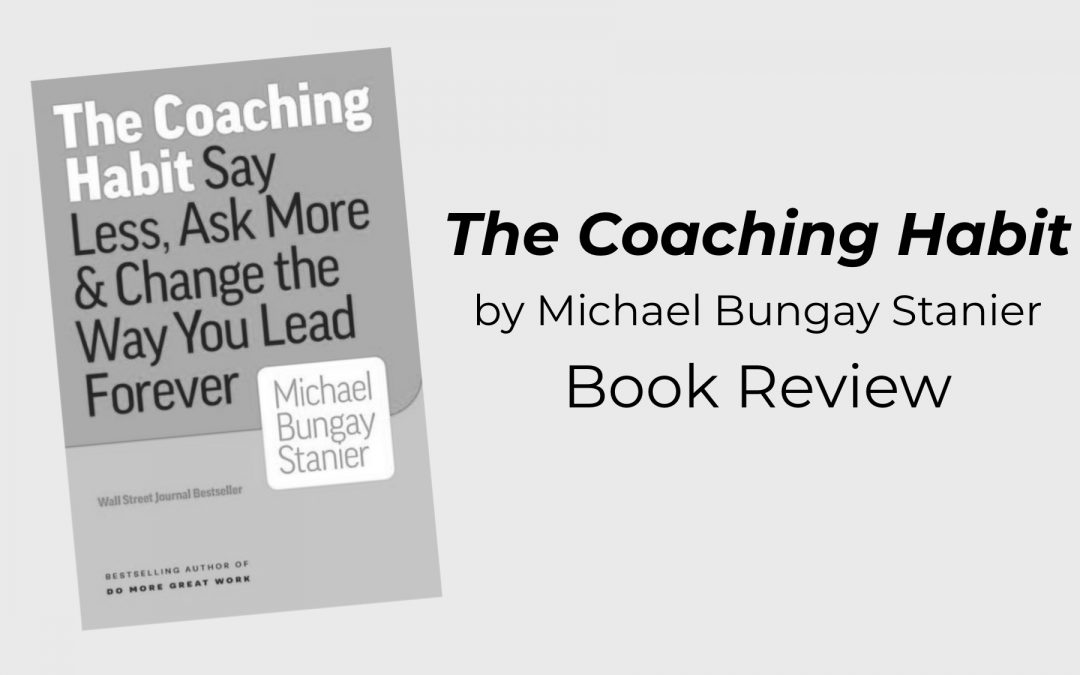Michael Bungay Stanier’s book, “The Coaching Habit: Say Less, Ask More, and Change the Way You Lead Forever,” is a masterclass (he says so, too!) in how to use coaching questions and techniques to become a better leader.
I love this book for both leaders AND for coaches. Solid advice, great questions, the “why” behind his recommended phrasing, and great examples combine for an indispensable go-to reference. I’m a huge believer in coaching skills for leaders!
Stanier breaks the book into 7 key questions, with coaching techniques following each question (I’m only covering 3 of each here, but the others are totally worth the read!).
One of the most effective ways to up your leadership game is by using the coaching questions & techniques in Michael Bungay Stanier’s, ‘The Coaching Habit.’ Catch the highlights! #businessbookclub #thecoachinghabit… Click To TweetCoaching Habit Questions
“What’s on Your Mind?”
I love this as an opening question – it doesn’t assume an agenda, isn’t judge-y (like questions starting with “why” sometimes can be), and is spacious enough for the person you’re coaching to step into. It’s a great question to start your conversation with.
The 3 Ps
Okay, this one isn’t a question, per se, it’s a way of deepening the conversation around “what’s on your mind?” Stanier’s 3 Ps are: Projects (the stuff that’s being worked on), People (roles and relationships in play), and Patterns (what’s getting in the way & how you’re showing up). By asking which of the 3 Ps your employee or client would like to focus on first, you can explore things more thoroughly.
“And What Else?”
Super-simple, and super-effective. The first answer out of someone’s mouth isn’t always the most important. By asking “what else?” we can extend the conversation and get after other (sometimes more important) issues.
“What’s the Real Challenge Here for You?”
The beauty of this question is that answering it helps your employee or client learn to recognize what they’re struggling with and think their way out of it. This question also brings the issue closer to something more concrete and actionable. Of course, if a zillion challenges come up, you’ll want to ask what the “real challenge” or “first challenge” is.
Coaching Habit Tips
Ask one question at a time, and make space for the answer.
It’s tempting to rapid-fire several in there at once (you’re SO curious!), but resist. Allow the time and space for the answer before moving ahead. Getting comfortable with silence after asking questions is one of the simplest, hardest, best things you can do (or as my own coach advises: W.A.I.T. – “Why Am I Talking?”).
Don’t offer advice in the form of a question.
As a fan of courtroom dramas, I know this as “leading the witness.” Stanier calls it “the fake question.” Questions that start out with, “Have you thought of…?” or “What about…?” are really advice masquerading as curiosity. If you want to offer advice, do it. But don’t wrap it in a question.
Start your questions with “what” (not “why”).
When you start with “why” (all apologies to Simon Sinek), Stanier says it’s because you want to fix the problem, which leads your employees or clients to overdependency on you. And “why” questions can have a side effect of putting them on the defensive, having to justify their behavior or answers. The “what” questions can be more open-ended and lead to deeper discussion and understanding.
“The Coaching Habit” is filled with practical advice any leader or coach can implement right away to become even more effective. Stanier also provides details on how to incorporate the habits of asking these questions into your conversations. Love this book!
What are your biggest takeaways from “The Coaching Habit”? Leave us a note in the comments below!

